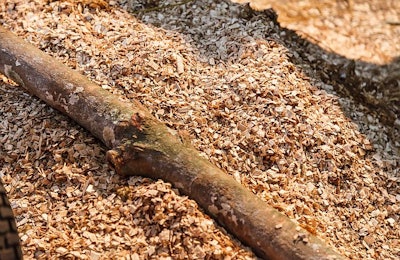
Torula yeast (Cyberlindnera jadinii) feed on woody biomass left as waste or residues from making wood products. Researchers can extract protein from those yeast. For pet food, torula yeast may have an advantage over other novel proteins. Torula yeast is already an approved ingredient, with a history of safe use, Ricardo Ekmay, PhD, vice president of nutrition for Arbiom, said in a video from Petfood Forum (below). In September 2019, Arbiom completed a 26-week feeding trial with dogs. The torula yeast protein performed on par with chicken meal.
“There is a long history of safe use,” Ekmay said. “It has regulatory approval, then the differentiation or the novelty comes in how we manufacture this product. We actually have expertise in the bioconversion of wood into food. So here we use wood as a feedstock to produce this yeast product.”
Torula yeast as a novel pet food protein
At Petfood Forum, Ekmay presented on Arbiom’s work with torula yeast and how it may enter the pet food ingredient supply chain.
Wood-eating torula have several things going for them as a sustainable, novel protein source, he said. Wood is abundant, renewable and doesn’t compete with human food crops. The waste wood comes from an industry with strong, existing supply chains that produce large amounts of residue material.
Torula yeast has excellent handling and extrusion properties as well, he said. Functional fibers in the yeast may benefit digestive system health. Torula doesn’t contain allergens or heavy metals, while providing amino acids.
Using timber industry residues to make pet food and livestock feed may benefit the economy and the environment, similarly to buying farmers’ misfit fruit to make upcycled dog treats.
“We're bringing a typically non-food plant or commodity into the food chain,” he said in the video. “Not just sort of just reshuffling proteins around.”
Petfood Forum CONNECT
Learn more about pet food nutrition at Petfood Forum CONNECT, where global pet food industry professionals will learn the latest pet food trends, access a wide network of industry suppliers and collaborate in one-to-one meetings to share business ideas. During a time when travel and in-person meetings are inadvisable, Petfood Forum CONNECT attendees will network during virtual meetings and happy hours, have access to more than 15 live or on-demand educational sessions and participate in live Q&A discussions with speakers and chat with pet food professionals from around the world. Registration grants access to options for an exclusive directory of digital showrooms, allowing attendees to schedule one-to-one meetings with key pet food industry suppliers.


















